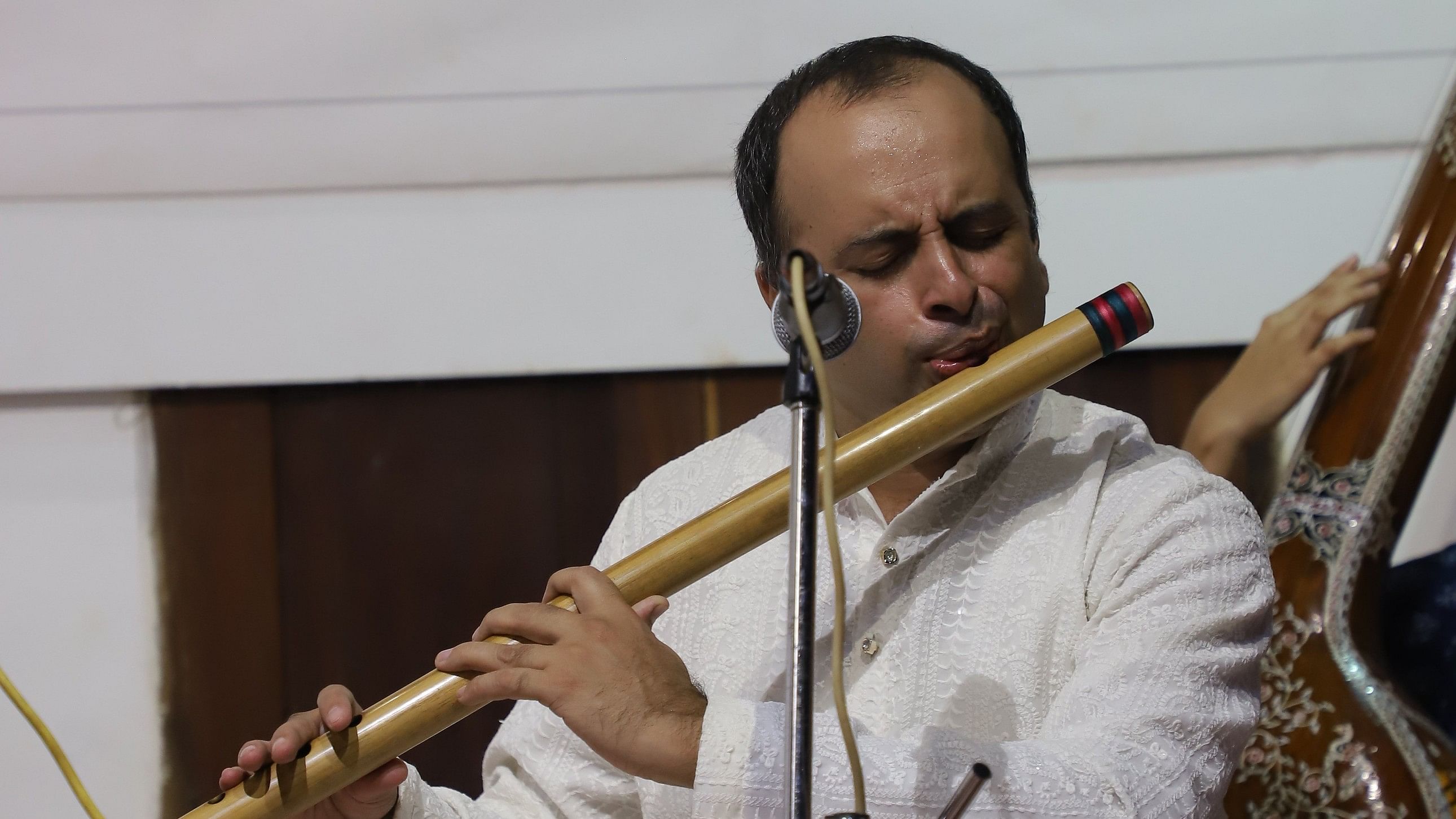
Flautist Kiran Chandrashekar Hegde performs with other artistes at a 'baithak' in Mangaluru.
Photos by Deekshith Pai
As dusk falls, at the traditional Kodialguthu house on Bangaru Guthu road in Mangaluru, an evening melody emanates from its front yard. Listeners sit enthralled as the raga unfolds in its various forms.
This is a typical scene at a ‘baithak’ concert , a gathering where the audience is seated on the floor, at a short distance from the artistes. The listening experience is elevated to a different level in an intimate space, accommodating an audience not exceeding 30 in number.
The Indian National Trust for Art and Cultural Heritage (INTACH), in association with the Artkanara Trust and Kodialguthu Centre for Art and Culture, started organising the baithaks to showcase classical music in 2017.
“The concept of baithak is not very familiar to the coastal region of Dakshina Kannada and Udupi,” says INTACH Mangaluru Chapter Convener Subhash Chandra Basu. This particular style of the concert has been famous in other cities such as Mumbai, Delhi and Lucknow for a long time. It needs to be encouraged here as well, he says.
The ambience
Starting from 2017, six baithaks have been hosted at INTACH’s Kodialguthu gallery in Mangaluru. The ‘chavadi’ entrance of a traditional guthu house has been converted into a gallery space where concerts and art exhibitions are held. Another part of the house is used as the INTACH office.
“I feel nostalgic at the guthu house, trying to connect with the legacy of a bygone era and music acts as a catalyst. Nothing could match the charm of live music,” says Deekshith Pai, a young music lover.
“The gallery is set up in a traditional space with artwork all around, creating a unique ambience for a musical evening,” says Basu.
“It is all about appreciating art from a different perspective. The effort has been quite successful, with the audience opening up to a new experience,” he adds.
Kiran Chandrashekhar Hegde, a Hindustani classical flautist, was one of the performers at a recently-held baithak. In fact, the present-day format of the concert was developed to accommodate a larger audience. In the past, music recitals would generally be held in temple spaces and the tradition is still practised in many places today, he explains.
“However, in places like Mumbai, baithaks are still conducted by classical music enthusiasts and art patrons at their homes,” Hegde adds.
Behind the scenes
At a baithak, amplifiers are used minimally, keeping in mind the smaller audience. Every audience member is, therefore, able to clearly listen to the acoustic sound as well.
More patrons should come forward to support the idea, and baithaks should feature local artistes, says Hegde.
In his baithaks, he prefers to play the evening ragas recommended for the ‘prahar’ (a part of the day). Each prahar comprises roughly three hours. The day is divided into four prahars and so is the night. The duration of a baithak is generally limited to one-and-a-half to two hours.
“One or two ragas would do justice to a baithak. When a raga is played completely, the resonating musical notes linger in the atmosphere and in the mind of listeners for a longer time,” Hegde says.
Kishori Nayak K, a former Mangalore University professor and a music enthusiast, says that the audience at a baithak has fewer distractions compared to a concert held in an auditorium.
Generally, in a baithak, the audience openly expresses appreciation by saying, “wah wah…kya baat hai,” in a ‘Lucknow’ style, as a compliment to the artiste. This open format allows the artiste to connect with the audience, and vice versa.
Gestures like these strengthen the bond between the artistes and the audience, also exemplifying the love for the art form, says Kishori.